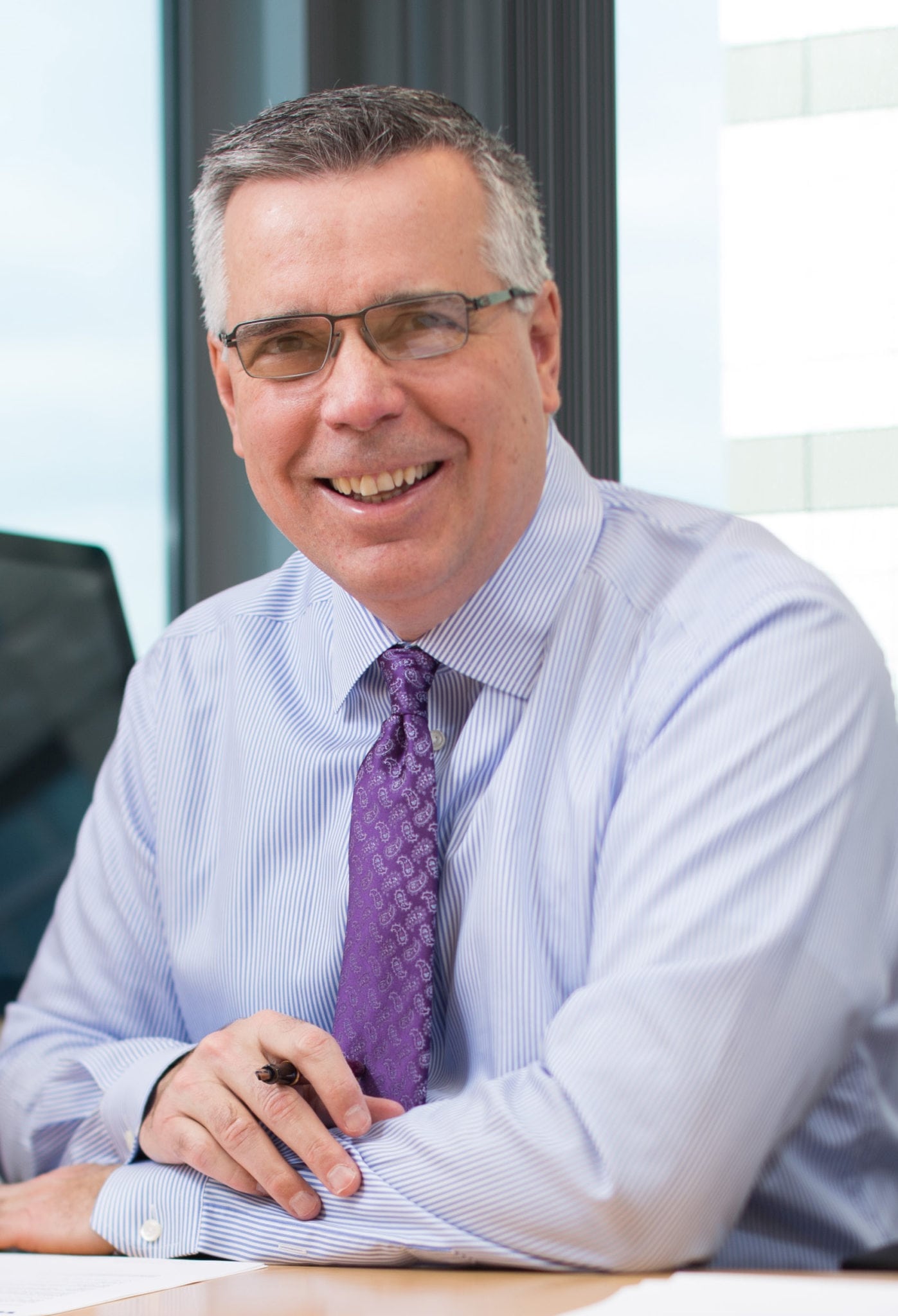A New School in a Young City – by Jack E. Orr, Dean Emeritus
Dean Charles Hill
Dean Horace G. Byers
Dean Charles Willis Johnson
Dean Forest “Foley” Goodrich
Dean Jack Edward Orr
Dean Milo Gibaldi
Dean Sid Nelson
Dean Thomas A. Baillie
Dean Sean D. Sullivan
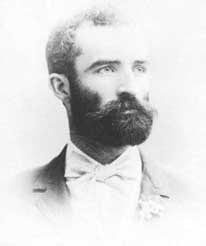
Young Professor Meany convinced the UW Board of Regents that a pharmacy school could be established with little or no startup cost to the University, if “the regular professor of chemistry were made Dean of the College” and if established pharmacists could be recruited to give lectures on a volunteer basis. Meany’s confidence that these volunteers would be found is evidence of the wide support of the pharmacy professionals at that time for the School.
The 51st school of pharmacy in the United States was established in 1894 in a muddy Washington frontier town called Seattle. The University of Washington College of Pharmacy was created through the efforts of the Washington State Pharmaceutical Association (WSPA), which had lobbied for legislation regulating its profession in the new state. With the passage of the bill in 1893 requiring all Washington pharmacists to be “graduates in pharmacy” unless already engaged in the business, the Association saw the need for a school of pharmacy in the Northwest.
The support of the state association, the board of pharmacy, and drug business leaders were critical elements in gaining the Regents’ approval. Another plus was that one of the members of the Board of Regents was David Kellogg, who co-founded one of Seattle’s first drug stores in 1863. These factors contributed to the formal resolution establishing the University of Washington’s College of Pharmacy, now the third oldest currently recognized school at the University, after the College of Arts and Sciences and the College of Education.
The First Class
On August 20, 1894, the College of Pharmacy opened its doors to some 21 students, among them four women. Because it was a two-year program, students were classified as juniors and seniors. (The School went by several titles until its present designation as the School of Pharmacy in 1972, and through much of its history was variously called the College or the School.)
The dean of the College was Charles Hill, the “regular” professor of chemistry, botany, and microscopy; the other three faculty for the entire college were volunteers.

In addition to a heavy load of botany and chemistry, first-year students were introduced to the history of pharmacopoeias and operative pharmacy–its physical principles, official standards, and purity. In the second year, students took on an even greater load of chemistry, including organic chemistry and quantitative analysis, and practical pharmacognosy, crystallography and toxicology, among other courses. Before graduation, students were also required to conduct original research and write a thesis under the direction of the faculty.
At the time the new pharmacy school was established, the University of Washington was already feeling growing pains. The first home of the School, the original University building on “Denny’s Knoll” (now the site of the Four Seasons Olympic Hotel), was described as “cramped and congested to the point of frustration.” However, in the fall of 1895, the new 350-acre campus and its first building were ready for students. The School of Pharmacy began its second year of existence in its new home, Denny Hall. In addition to its new quarters, the School also acquired a new dean, Henry Coffenberry Myers.
Myers taught all the chemistry courses himself with some unpaid laboratory assistance from Thomas Lough, a senior pharmacy student. Overworked and underpaid, Myers complained to the Board of Regents that he often worked from 9 AM until midnight and put in hours on Sundays as well. The result was that a year later, Myers was able to hire the newly graduated Thomas Lough at a salary of $15 a month.
The first class of the School of Pharmacy was graduated in May 1896. Eleven students, including three women, received the first Ph.G. (Graduate in Pharmacy) degrees to be awarded by an institution in Washington State.
Early Difficulties
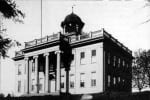
However, this first class of 11 was to be the largest graduating class for the next six years. In the 1896-97 catalog, applicants to the School of Pharmacy were notified that, “hereafter the pharmaceutic degree will be given only as post-graduate to the baccalaureate degree of B.S.” In other words, pharmacy was now a five-year program! This had a chilling effect on aspiring applicants. Although current seniors were permitted to complete their programs, no new students enrolled, and the college, in effect, ceased to exist.
What had prompted such a dramatic change in curriculum? It appears that the new school had an unforeseen antagonist in the new president of the University, William Edwards. Edwards was characterized as being “bitterly opposed” to a College of Pharmacy and wanted to see it abolished. Although Edwards was president for only a brief period–from March to October of 1897–he managed to create an atmosphere of turbulence and unrest. The School of Pharmacy was only one of several programs that suffered under his management.
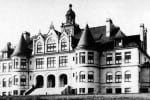
This setback was received poorly in the professional community as well. During the summer of 1897, the Board of Pharmacy decided that it could not recognize graduates from the School of Pharmacy for registration without examination. According to the Board, although it desired to support the pharmacy program at the UW, the legislature had not provided sufficient appropriations to properly equip and maintain the department. Consequently, the School was “not regarded as being up to the standard of the average pharmacy school.” Therefore, the Board had decided not to recognize diplomas from the UW as fully meeting the requirements for licensure by graduation. In 1899, only one student graduated from the School of Pharmacy. There would not be another graduating class until 1901.
A Fresh Start
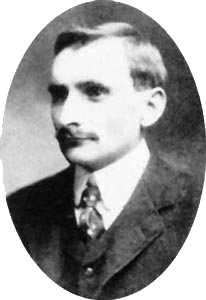
It took the singular dedication of Frank Pierrepont Graves to resurrect the School of Pharmacy. Graves, the new UW president after the unfortunate Edwards, pledged in his 1897 inaugural address that “the School of Pharmacy soon be reopened.” He later met with the WSPA and expressed his wishes to establish “the closest kinds of relations between the University and the druggists of the state.” He consulted with the WSPA about the feasibility of a two-year pharmacy program and committed the University to re-establish the School. In addition, he petitioned the Board to recognize the diplomas of the graduates of 1896 and 1897.
Graves recruited Horace G. Byers, from Johns Hopkins University to head the new school. Byers, a chemist, was brought in primarily as chairman of the chemistry department with the added assignment of dean to restart the pharmacy program.
The School again adopted a two-year curriculum, with an interesting addition. Although the course of study covered two years and led to the Ph.G. degree, the diploma also required at least four years of practical experience for the graduate to receive certification (or licensure) by the Board of Pharmacy. This requirement foreshadowed the practicum component of modern pharmaceutical education.
The Twentieth Century and a New Direction
Despite the setbacks of its early years, the School of Pharmacy was in a strong position by the turn of the century. In 1901, Pharmacy was one of five schools and colleges listed in the University of Washington catalog — and the School was growing faster than ever. With the new administration came new demands for space. Chemistry classes had to be divided into sections, or relays, and filled every available desk, even occupying the professor’s private study space.
The year 1902 saw the largest entering and graduating classes of the young School. Twenty first-year and 17 second-year students were enrolled, and in addition to Denny Hall, they used the new Science Hall (now Parrington) to take courses in botany and physiology.
Dean Charles Willis Johnson
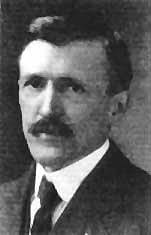
From the Turn of the Century through the Depression
The Fall quarter of 1903 was the beginning of a new era for the School of Pharmacy. Previously, the School, through its deans and professors, had been wedded to the chemistry department. Nevertheless, in the person of Charles Willis Johnson, the School finally appointed a full-fledged pharmacist as professor and dean, a position Johnson would hold until 1939. Johnson also struggled with the growing need for more space for the rapidly expanding School. By 1905, it was necessary to build a one-story temporary building (known as the “Chem Shack”) to contain the overflow for both chemistry and pharmacy students. See Bagley Hall laboratory.
During Johnson’s long tenure, the School received the administrative stability and guidance to achieve national recognition for its endeavors. Although his early years were largely spent tackling the usual problems of understaffing and overcrowding, Johnson worked hard to build the School’s reputation.
Old Bagley Hall
In 1910, the School received new quarters from the legacy of the Alaska-Yukon-Pacific Exposition held on the University campus in the summer of 1909. The building, which had housed an art exhibition, was remodeled for chemistry and pharmacy classes and laboratories and named Bagley Hall, after the Reverend Daniel Bagley, who had been an essential force in obtaining the University of Washington for Seattle. This building (which is now known as Architecture Hall; the Bagley name was later transferred to the present building) was also affectionately called the “Chem Shack.”
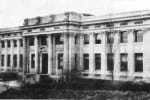
In spite of the relative wealth of space that Bagley Hall offered its occupants, the veterans returning from World War I in 1918 created another overcrowding crisis. By 1920, the Pacific Drug Review reported that the University administration was again considering plans for more space for pharmacy and chemistry.
Although 17 years would pass before pharmacy would be housed in a larger building, the School obtained temporary relief in the shape of an old wooden building just west of the old Bagley Hall. The “Pharmacy Building,” as it was called in the catalog, was remodeled as an up-to-date prescription laboratory, with space for 50 prescription desks and equipment.
During his administration, Johnson directed the development of the curriculum from two to three and then four years and introduced graduate studies leading to the master’s and doctoral degrees. By the late 1920s, the University of Washington claimed to have the largest enrollment of
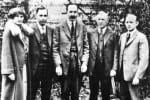
graduate students in the nation. Prominent pharmacy educators ranked the UW School of Pharmacy as one of the top three schools in the nation for undergraduate programs.
New Bagley Hall
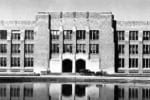
In the last years of Johnson’s tenure, in the middle of the Great Depression, a new building was constructed courtesy of the federal Public Works Administration. After several years of planning and construction, the new Bagley Hall was dedicated in October 1937.
The new 172,000 square foot structure, which also housed chemistry and chemical engineering, offered space on a
grander scale than the School had known. Until the mid-1990s, Bagley Hall would continue to be home to a good number of the School’s faculty and students.
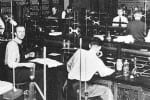
Dean Forest “Foley” Goodrich
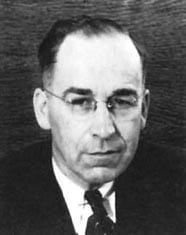
From World War II to the Fifties
When Johnson stepped down in 1939, his successor, Forest “Foley” Goodrich, inherited a School that was well regarded and administratively stable. Goodrich had earned every one of the degrees that the School of Pharmacy offered including its first Ph.D.
Goodrich’s challenges were initiated by world events. In 1939, the world was on the brink of war and Goodrich and his faculty were faced with developing an accelerated, year-round program for students during the war. Even more of a challenge was the influx of students that arrived after the war, straining the already limited physical capacity of the School.
In 1946, the University was granted $5 million to build a health sciences complex to house the newly organized schools of medicine and dentistry. The School of Pharmacy took the opportunity to request space in the new building so the School could become more closely integrated with medicine, dentistry and nursing to foster and enhance multidisciplinary research in basic and clinical science.
As one of the “charter deans” of the Division of Health Sciences, Goodrich was involved in planning for the new Health Sciences Building and lobbied intensively, although unsuccessfully, to secure a pharmacy wing on the new structure.
Pharmacy was also evolving at this time, from botanically based drugs to synthesized ones. To keep pace with the rapid changes in the field, the faculty began planning a new five-year curriculum. The School thrived under Goodrich, who led its administration for nearly 20 years.
Dean Jack Edward Orr
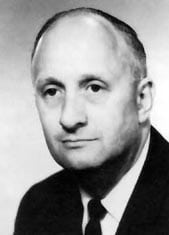
From Eisenhower to the Computer Age
In 1956, Jack Edward Orr succeeded Goodrich. Orr was the first dean to have extensive experience with other schools of pharmacy and had previously served as dean of the University of Montana’s School of Pharmacy in Missoula.
For the next 22 years under Orr’s leadership, the School of Pharmacy would double its faculty and increase its funding. The progressive five-year curriculum was implemented and emphasis shifted from the laboratory to the clinical approach, oriented to patient care.
Orr vigorously continued the campaign for locating the School in the proposed Health Sciences Building. Part of his strategy was to infiltrate the new building in small steps, first by transferring library holdings from Bagley Hall to the new Health Sciences Library. Later the School’s Department of Pharmacy Practice moved into a small building known as Health Sciences Annex II.
During this time, academic and clinical research surged to the forefront. As the faculty grew in number and prestige, it began attracting federal grants. The School underwent an administrative reorganization, creating the departments of Pharmacy Practice and Pharmaceutical Sciences. Pharmacy service to the general student body was also made available at Hall Health Center and the School of Pharmacy gained its own commencement ceremony.
Orr took a special interest in pharmacy education on the national level and served as president of the American Association of Colleges of Pharmacy and later as chairman of its Executive Committee.
Dean Milo Gibaldi
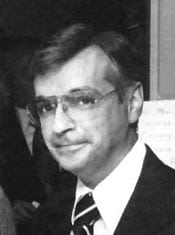
From the Me Decade to the Edge of a New Century
In 1978, Orr handed the reins of leadership to native New Yorker Milo Gibaldi, who had established a national and international reputation for his research in the fields of biopharmaceutics and pharmacokinetics.
Under Gibaldi’s leadership, the School renewed its commitment to the professional pharmacists in the state. Gibaldi also placed the need for more space on the front burner. In his first year, he convinced the administration to relocate the dean’s administrative suite to the T-Wing in the Health Sciences Building. The Department of Pharmacy Practice joined them two years later.
Gibaldi was instrumental in inspiring interdepartmental research efforts and in 1980 the School surpassed $1 million in research support for the first time. That same year, Gibaldi divided the Department of Pharmaceutical Sciences into the departments of Medicinal Chemistry and Pharmaceutics, and in 1992 he renamed the Department of Pharmacy Practice the Department of Pharmacy. His ability to focus the prodigious talent of the existing faculty into directed research efforts and to recruit new people to enhance and strengthen these programs has proved invaluable to all three departments.
In addition, Gibaldi implemented the two-year, post-baccalaureate Doctor of Pharmacy (PharmD) program, which had been in the planning stages for some years, and graduated its first students in 1982. Combined with an American Society for Hospital Pharmacy accredited residency program, it was recognized as one of the foremost graduate programs in the nation. Much of the PharmD program’s success is credited to the School’s exceptional link with the UW’s major teaching and research medical centers, Harborview Medical Center, and University of Washington Medical Center.
Dean Sid Nelson
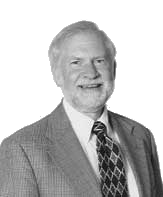
A New Era in Pharmacy Education
Professor Sid Nelson assumed the reins as the Dean upon Dr. Gibaldi’s retirement in 1994. Under Dean Nelson’s leadership, the School converted to an entry-level Doctor of Pharmacy degree program and added a nontraditional approach that enabled existing pharmacists to obtain degrees. Dean Nelson also evolved the graduate programs and tirelessly expanded the School’s faculty.
With the aid of exemplary faculty, researchers, and students, he helped the School become internationally recognized for outstanding achievement in drug metabolism and disposition, drug interactions, outcomes research, and geriatric and patient-care practice programs.
The beloved dean stepped down from his position in September 2008 to resume his teaching and research activities in the School’s Department of Medicinal Chemistry.
Dean Thomas A. Baillie
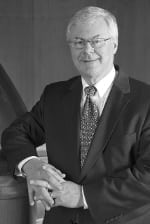
Through the Great Recession
In October 2008, the School welcomed Thomas Baillie, Ph.D., D.Sc., as its newest dean. Baillie had previously served as a professor of medicinal chemistry in the School from 1981 to 1994. He was appointed dean of the School of Pharmacy after holding major leadership positions in the private research industry.
Baillie took the helm just as the world economic market collapsed and the U.S. entered the Great Recession. Nationally, universities faced significant funding shortfalls as federal and state resources shrank. Baillie led the school through its worst ever budget crisis. His business skills and expertise kept the School steady in a rocky time.
Baillie kept looking forward, past the crisis. A new budget system was implemented. Student enrollment grew. He collaborated with the health science deans to expand the School’s impact on programs across the health sciences at the University of Washington. In 2012, the school opened the L.D. & Jim Bracken Pharmacy Learning Center, a flexible learning environment for students and practitioners.
Throughout, the School maintained its reputation as one of the best Schools of Pharmacy in the country, known for its excellence in pharmacy education, pharmaceutical research and public health. In 2014, the UW School of Pharmacy received full accreditation—a true affirmation of Dean Baillie’s leadership and the School’s outstanding and productive faculty.
Dean Sean D. Sullivan
Shaping the Future of Pharmacy
n Fall 2014, Sean D. Sullivan became Dean of the School of Pharmacy. Sullivan came to the University of Washington in 1992 and was promoted to full professor in 2001 and associate dean for research in 2010.
A pharmacist by training, Sean has held numerous leadership roles, including his most recent role as the Stergachis Endowed Director of the Pharmaceutical Outcomes Research and Policy Program (PORPP). Under his leadership the PORPP program grew in size and funding to become the premier outcomes research and policy program, with its faculty and students regularly receiving national and international recognition for excellence.
Sullivan’s framework for the School is to: collaboratively create a strategic plan, improve the already great student experience, and take interprofessional education to the next level, well in advance of the AACP accreditation requirements. We are on track to exceed those goals.
The School continues to prepare future generations of student leaders to respond adeptly to ever-changing systems of health care, pharmacy practice and research. And its faculty and students remain key players in the advancement of pharmacy practice, pharmaceutical research and patient advocacy.
Under Sullivan’s leadership, the UW School of Pharmacy is on its way to being the global leader in pharmacy education, research, and service, committed to providing a transformative learning experience in a collaborative and diverse environment focused on improving the health and well being of the communities we serve.
